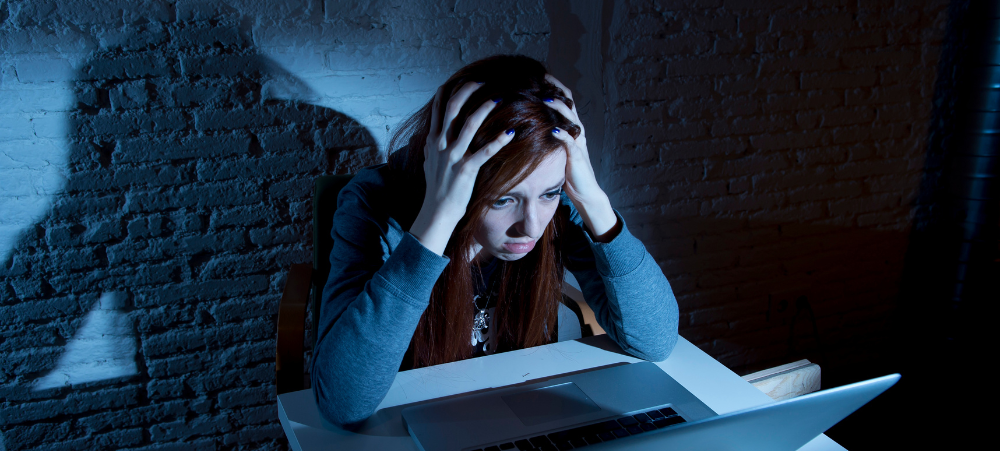A happy home environment can help your child to develop an internal sense of control and a positive sense of self that will equip them to avoid eating disorders.
Teen body image refers to how adolescents perceive their bodies. It includes their feelings about their body and how they take care of it, and is an essential part of adolescent development. Teen body image is also closely linked to self-esteem, largely because society and the media place so much importance on the way we look. This focus on appearance contributes to teenage body image issues and teen eating disorders.
“An important challenge faced by teenagers is internal versus external locus of control,” says Linda Swanepoel, therapeutic manager and occupational therapist at Akeso Montrose Manor. “This means the extent to which a person believes they have the power over events in their lives. A person with an internal locus of control believes that they can influence events and their outcomes, while someone with an external locus of control blames outside forces for everything and seeks external approval and validation to feel good about themselves.”
A healthy, confident child will learn to have an internal locus of control, but if the child is raised in a household where there is instability and chaos, and at times a lack of safety, they may learn an external locus of control.
“When a child is too young to have the resources to cope they soon learn that ‘if I can help mommy and daddy to feel better, I will feel better’. As they grow older, face more stress and carry the weight of expectations, their focus turns to pleasing or impressing others, rather than developing a sense of self.”
Teenagers experience increased school and societal pressures at a time when significant changes are taking place in their bodies. Thus, if they have not learned to believe in their own resources to cope with life, their focus will be on what other people expect or think of them, rather than on how they feel about themselves.
“Eventually, everything they choose to do in their lives is dependent on assumptions they make about how they will be perceived by others,” Swanepoel adds. “Body image plays an important role in this too.”
Why body positivity is important
“Teenagers tend to see the concept of a ’middle path’ as average and boring, and Western society reinforces this all or nothing thinking. This leads to beliefs like you must have the perfect body, you must go to university and you must make money,” Swanepoel says.
“This is why body positivity is important,” Swanepoel explains. “If we can get our society to be more middle path thinkers, teenagers with an external locus of control may be able to be more realistic and accepting of themselves. With less stress and pressure, it is easier to listen to your own voice and develop your own sense of self.”
Body image and weight risk factors
Maintaining a weight lower than your natural set point, or trying to lose weight, immediately activates “all or nothing” thinking. It takes motivation, discipline and determination to restrict food intake, so teens develop strict rules and often the rewards are external (for example, praise from others).
“If you break a rule you’ve set for yourself, you feel weak and like a failure, and believe you are a greedy person,” says Swanepoel. “Greed, indulgence and selfishness are bad words in Western society, and can lead to guilt. Once the rules are broken, at risk teens tend to go off the rails and binge on forbidden foods. This may lead to secret eating rituals, comfort eating and avoidance of life, which may in turn lead to obesity.”
According to Maslow’s Hierarchy of Needs, people need to meet basic needs like food, sleep, water, health and safety before they can strive for self-esteem and self-actualisation. “People who diet are depriving themselves of these needs in a drive for self-actualisation,” Swanepoel says. “They compromise their health, their relationships and their goals and aspirations as they become preoccupied by food, exercise and weight, becoming prisoners to their own habits. They end up lonely, exhausted and feeling like a failure – and they hate their bodies no matter what size they are as perfection is unattainable. This is where depression, self-harm and suicide become possibilities.”
Look out for these warning signs
- Loss or gain of weight or fluctuating weight – often from bulimia – are the most common symptoms of eating disorder among teenagers
- Increased exercise and keeping busy all the time, as fear of boredom may lead to binge urges
- Avoiding social situations, as they have too many secrets to keep and need to stay in control
- Rigid thinking and ‘all or nothing’ thinking – judgemental, critical and catastrophising
- Isolation
- Spending many hours on social media
- Spending time preparing food and baking for others, but not eating themselves
- Making excuses at meal times (I’m going to work in the library, I’ll get a take away lunch)
- Many demands at restaurants – food rules become important (I’m gluten/lactose intolerant, I’m a vegetarian/vegan. I’m banting. No carbs, no sauce and no salad dressing)
- Becoming angry and defensive when help is offered
- Wearing baggy clothes, usually in neutral colours – black, white, grey
- Spending time with people who are not matched to the teenager’s personality
- Depression, anxiety and obsessive compulsive disorder (OCD) symptoms.
How can you help?
Children need to feel safe so that they can focus on self rather than feeling responsible for others. Swanepoel points out that it’s important to avoid the ‘drama triangle’ – perpetrator, victim and rescuer.
“This is when one parent complains to the child about the other parent. The child will feel the need to take sides and rescue, immediately starting the external locus of control cycle. This leads to low self-esteem, which can lead to body image problems, such as restricting (trying to be perfect) or binging (as a result of avoidance). Parents need to work as a team and find a parenting style that suits them both. This helps the child feel safe and avoids manipulation which the child will soon become very good at.”
Swanepoel offers the following tips to parents and caregivers for creating a positive environment:
- Develop a healthy relationship with food and avoid labelling good or bad food in the home.
- Don’t talk about your own weight issues – be a good example (even if you don’t feel like being one)
- Eat meals as a family – home-cooked if possible.
- Encourage outdoor living and exercise – it’s not about winning but about enjoying.
- Teach respect and appreciation of your body. If you treat it well, it will reward you.
- Avoid judgement – rather be curious as to why your child behaves in a certain way. Listen with an open mind before giving advice. Discuss rather than lecture. When you have an internal locus of control, you can feel inside yourself what is right and wrong from an early age. Teach children to listen to their inner voice.
- Be aware of making your child fearful of negative emotions. Encourage a comfortable relationship with all emotions – anger and sadness are healthy, if they are managed properly. Try not to allow the home space to become one filled with chaos and endless ’emergency’ situations that evoke extreme feelings.
- Create firm boundaries – teenagers are not ready for independence, even if they think they are. By making your child responsible for the consequences of their behaviour, they learn to believe in their own internal resources.
Global statistics on self-esteem
DoSomething.org, a digital platform in the US that mobilises young people to make real world changes, reports the following:1
- 58% of university-aged girls feel pressured to be a certain weight.
- Studies show that the more reality television a young girl watches, the more likely she is to find appearance important. More than one third of the people who admit to ’normal dieting’,” will merge into pathological dieting. Roughly a quarter of those will suffer from a partial or full-on eating disorder.
- Students, especially women, who consume more mainstream media, place a greater importance on sexiness and overall appearance than those who do not consume as much.
- 95% of people with eating disorders are between the ages of 12 and 25.
- Only 10% of people suffering from an eating disorder will seek professional help.
If you suspect your child has an eating disorder, talk with them about the problem. If you or your child require professional help, contact Akeso at 0861 435 787. The sooner medical and psychological treatment can start, the faster you or your child will be on your way to recovery.
Reference:
1. DoSomething.org. [Internet]. 11 Facts About Body Image. Available from: https://www.dosomething.org/us/facts/11-facts-about-body-image
We understand that there are many aspects that encompass a Mother, Father or Child and strive toward providing resources and services that accommodates this.
Our content is aimed to inform and educate families on issues starting from pregnancy through to the challenges of the teen-age years.
- Say Hello to the Ultimate Holiday Brunch Bite - December 17, 2025
- Tiny Toons Looniversity Returns: Meet the Voice Behind Plucky and Hamton! - December 12, 2025
- From Pain to Possibility: Panado®’s New Marketing Campaign, Highlights The Joy Of Pain Relief - December 10, 2025





